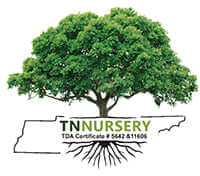
The Stunning Blue Joint Grass
Share
Blue Joint Grass is a fast-growing, clumping grass that forms dense, compact bunches. Blue Joint Grass grows from 6 to 12 inches tall with 1/4 inch wide blue-green blades.How Do You Take Care Of Blue Joint Grass?Blue Joint Grass requires little maintenance once established. Add compost around the base of your plants every spring to encourage vigorous growth and prevent weeds from taking over your garden beds.How Much Sunlight Can Blue Joint Grass Take?The amount of sunlight blue joint Grass needs varies depending on where you live. Blue joint Grass will do well in full sun all year long in areas with mild winters, such as Florida or California. However, if your area has cold winters or receives heavy rainfall throughout the year (such as in Washington State), place the plant in partial shade when temperatures drop below 50 degrees Fahrenheit or 10 degrees Celsius).Does Blue Joint Grass Back Up Every Year?Yes, blue joint Grass will back up every year. If you are not mowing your lawn regularly, the plants will grow taller than average and become more susceptible to diseases and pests.What Does Blue Joint Grass Look Like?Blue joint Grass has pale green leaves and can grow up to two feet high. The flowers are pinkish- lavender in color.
Where Does Blue Joint Grass Grow
Blue common Grass is found in almost every part of the world except for tropical areas and Australia. It's native to Europe but has been introduced to other places.What Are The Environments In Which Blue Joint Grass Grows?Blue common Grass grows well in sunny areas with sandy soil or loamy soil that drains well. It does not grow in poorly drained soils because these conditions will cause root rot and reduce the growth rates significantly.Is Blue Joint Grass Toxic?Although blue Joint Grass is not considered toxic to humans or animals, it does contain some chemicals that may be dangerous if consumed in large quantities over time.How to Grow Blue Joint GrassBlue joint grass seed can be planted indoors or outdoors depending on your country's climate and planting time frame. If you live in an area where winters are cold, wait until spring before planting your seeds outdoors, so they have time to germinate before winter arrives. If you come from an area with milder winters, you can plant the seeds outdoors during late fall orearly winter.
How Do You Care For Blue Joint Grass
Planting Blue Joint Grass in raised beds or containers will help keep it contained; otherwise, it will spread fast if left unchecked by frequent mowing or edging around the perimeter of your lawn with a string trimmer or weed whacker.How Did Blue Joint Grass Get its Name?Blue common Grass gets its name from its color and the way it grows from its roots. The Grass is blue-green and grows in very straight rows.
